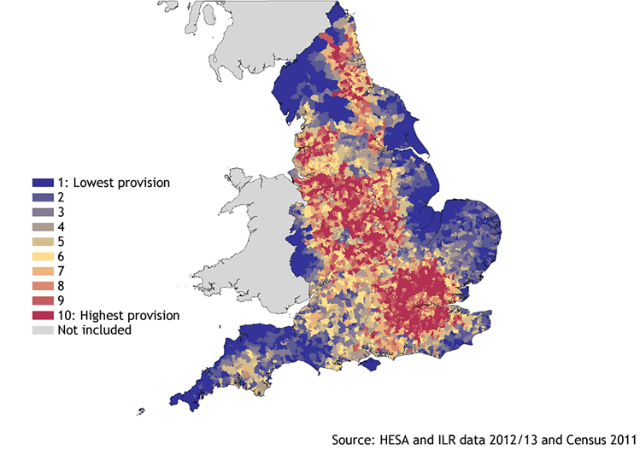Open data offers a golden opportunity for institutions to understand their customers and market. Harvey Lewis of Deloitte explains how businesses are using this data to make better decisions.
According to free online statistics from the Higher Education Statistics Agency (HESA), the UK’s universities and Higher Education (HE) colleges collectively taught 2.3 million students in 2012/13, employed nearly 200,000 members of staff and generated a combined income of £29bn.
As well as its significant contribution to the UK’s economy, the HE sector also produces a huge quantity of data. For example, a report on data collections by the HE Better Regulation Group, carried out in 2010, estimated that there were “approximately 550 lines of reporting across the sector”.
Many of these data collection activities – specifically those associated with student data – are now the subject of a major improvement exercise under the auspices of the Higher Education Data and Information Improvement Programme (HEDIIP).
Data rich but information poor
The HE sector may be data rich but it is also information poor. Yes, its data is collected and used to support critical decisions about funding, policy, registration and accreditation, and to comply with regulation, but could more be done to support both students and HE institutions? The HEDIIP programme thinks so, and there are low-hanging fruit in terms of rationalisation of data collection and greater reuse.
But there are also increasingly challenging questions about the future of higher education provision. Such as what skills and knowledge should universities and HE colleges be teaching their students to give them the highest chance of employment? How can this be tailored to maximise employment potential for students in particular areas of the country? How can institutions improve their marketing to target the right school-leavers? And how can struggling students be identified before they fail or drop-out?
Open data contributes to the bigger picture
The answers to these questions, and many more, rely not just upon the data that the HE sector itself collects but also upon many other external sources, including a growing wealth of open data. External data provides richness and context that is commonly missing from internal data alone; it provides the ‘bigger picture’ – like these maps of HE ‘cold spots’ produced by the Higher Education Funding Council for England (HEFCE). And while focusing attention exclusively on HE data has some value, the reality is that behind the bigger picture potentially lies an even bigger prize.
An increasing number of the organisations that I work with recognise the importance of this mixed data model – a mix of internal, open and other commercially licensed data sets to drive more valuable insights and smarter decision making.
Many of the best examples I’ve seen come from retail and consumer businesses that are using multiple sources of data to build a better understanding of their customers. From the insights derived, they adapt their products, services, marketing and operations to deliver more precisely what is needed in the most efficient manner.
Retail: a focus on customers
For example, I have recently conducted a study of Britain’s banks and building societies, drawing on open data, including census data, population projections, business demography, household internet access statistics, boundary lines and postcode lookups, and commercially licensed data describing local economic conditions, to examine how the demand for branches varies across the country and will vary in the future.
Combining data and insights with internal data has allowed clients to make key decisions about future locations, branch formats and services that would not have been possible with internal customer data alone – decisions that ultimately benefit customers or minimise the impact of change. The mixed data approach has not only corroborated in some cases what were previously hunches but it has also disproved a number of hypotheses that would otherwise have contributed to a rapid decline in efficiency and massively increasing cost.
Right across the consumer business sector, companies are bringing together internal data sets to build a single view of their customers – exactly analogous to using a unique learner number to identify students as they traverse the HE system – and have then added external data to allow them to make faster or cheaper or better decisions about the next best action for individual customers as well as for themselves.
There is no silver bullet
Open data may not be a silver bullet for the HE sector but it does provide a golden opportunity for all institutions to focus on their particular markets and improve efficiency and effectiveness.
Evidence from one consumer business that has adopted this approach suggests that profitability in some stores, driven by more location-relevant products and services, increased by as much as 400%. If equivalent external sources of data are not incorporated into the HE decision-making process then savings will be harder to come by and the provision of services to students will remain sub-optimal.
In an increasingly competitive and deregulated market, becoming insight-driven – using all the relevant available data – will not only deliver benefits to students, but is also an imperative.
How is your organisation using open data?
Harvey Lewis is a director at the consultancy firm Deloitte LLP, where he leads research in data and analytics.








